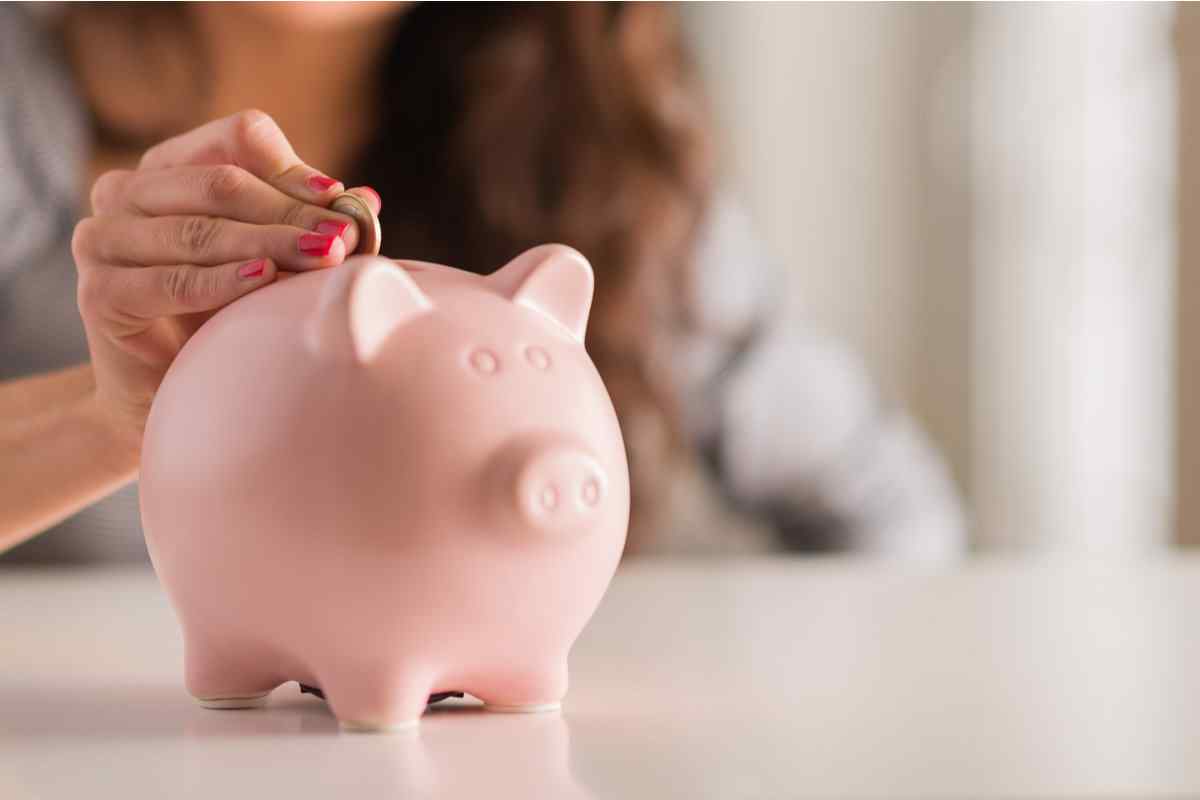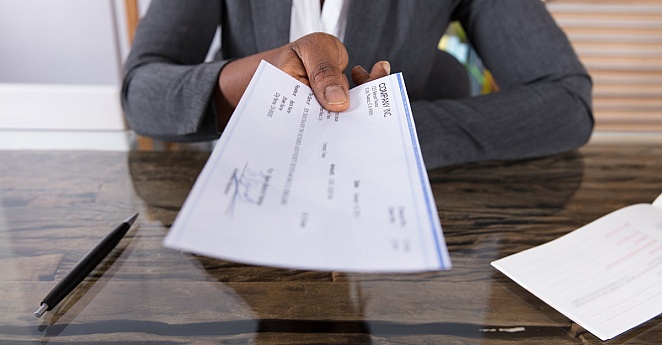What Food Can You Buy with an EBT Card?
If you are a new SNAP recipient or regularly walk your grocery store aisles wondering what items your food stamp benefits apply to, this is the blog for you. We'll discuss eligible food items with EBT (previously the federal food stamp program). As a bonus, we'll also share some money-saving tips so that you can stretch your EBT as far as possible.
What is EBT, and What is it Used For?
The Electronic Benefits Transfer (EBT) program is a welfare program that gives cash aid benefits to qualifying citizens of the U.S. The program provides an electronic card that is used like a debit or credit card to purchase essential food items. EBT is available to U.S. citizens living in all U.S. states and territories. EBT also used to be known as food stamps. What do food stamps cover? Anything that fits the food stamps definition. For the most part, what can be bought with food stamps can also be purchased with EBT.
Several programs fall under the EBT program:
- SNAP Food Benefits
- WIC Nutrition
- D-SNAP
SNAP Food Benefits

The Supplemental Nutrition Assistance Program (SNAP) helps supply food for low-income families who are struggling to afford food. It provides a monthly allowance, which is dispersed onto an EBT card over the first 10 days of the month, though the timeline can vary. The EBT card is then used like a regular debit card at checkout. Like debit payments, the transaction will pend immediately, and when it clears, the cost will be deducted from your monthly food stamp balance. This makes it easy to spend your money and saves you the trouble of carrying around physical food stamps as in the old system.
The SNAP program is in widespread use across the country. Nearly 39 million Americans use SNAP to supplement the income they allocate to food. The national average of Americans who use SNAP is 12%, but it is as high as 21% of the population in some states. Most states have their own modified version of SNAP or call it by a different name. For example, California's SNAP program is also known as CalFresh.
How Much Can You Get in SNAP?
How much you receive in SNAP money depends on you and your family's unique financial situation. However, you will need to meet a resource cap, income limit, and work requirements to qualify at all.
A SNAP household cannot have over $2,250 in its bank account. This increases to $3,500 if at least one person in a household is over 60 or disabled. Property is not counted toward this resource cap. Supplemental Security Income (SSI), Temporary Assistance for Needy Families (TANF), and most pension and retirement plans are not counted towards the resource cap either.
Income limits change every year and must be met unless every SNAP household member is receiving SSI, TANF, or other assistance. If a household member is over 60 or getting disability payments, only net income is affected by the income limit. This roughly translates to a gross monthly income at or below 130% of the poverty line and a net monthly income at 100% of the poverty level for a one-member household.
Monthly SNAP benefits are calculated based on the above factors. The maximum monthly allotment changes with inflation. In 2021, a one-member household could receive a maximum of $234.
WIC Nutrition
 WIC is the Special Supplemental Nutrition Program for Women, Infants, and Children. It is provided by the Food and Nutrition Service of the U.S. Department of Agriculture, the same agency that supplies other food assistance programs. This program is specifically designed for maintaining the health and nutrition of low-income women, pregnant women, and children under five.
WIC is the Special Supplemental Nutrition Program for Women, Infants, and Children. It is provided by the Food and Nutrition Service of the U.S. Department of Agriculture, the same agency that supplies other food assistance programs. This program is specifically designed for maintaining the health and nutrition of low-income women, pregnant women, and children under five.
WIC provides supplemental nutrition, nutrition education, and healthcare referral to these populations. WIC must be spent on specific items that are necessary to meet an individual's nutritional needs. WIC-eligible foods include:
- Iron-fortified adult cereal
- Infant cereal
- Vitamin C-rich fruit or vegetable juice
- Eggs
- Milk
- Cheese
- Peanut butter
- Beans and legumes
- Canned fish
- Soy-based beverages
- Tofu
- Vegetables and fruits
- Baby food
- Whole wheat bread
WIC also provides an iron-fortified baby formula for women who do not breastfeed. Under WIC, qualified individuals can get up to $47 per month in assistance.
D-SNAP
 D-SNAP is another subcategory of the SNAP program. It stands for Disaster Supplemental Nutrition Assistance Program. It gives food assistance to specifically low-income families that are experiencing food insecurity due to a natural disaster.
D-SNAP is another subcategory of the SNAP program. It stands for Disaster Supplemental Nutrition Assistance Program. It gives food assistance to specifically low-income families that are experiencing food insecurity due to a natural disaster.
This particular type of food assistance has different eligibility requirements than the two programs above. People who may not usually qualify for food assistance may be eligible for D-SNAP assistance if they are experiencing:
- Evacuation or relocation
- Home or business repairs
- Personal injury related to disasters
- Lost income due to a disaster
- Food loss after a disaster
What Can You Buy with EBT

So, you may be wondering “what can you buy with snap benefits?” Most food items in the grocery store can be bought with EBT, but there are some exceptions. You can only use EBT at a store that accepts this as a payment method. Nowadays, most large grocery stores and convenience stores accept EBT. Such stores include Albertsons, Amazon, Walmart, Safeway, and Vons. Some stores even accept EBT cards online.
So, back to the question at hand: what can be bought with food stamps?
Here are some things you can buy with EBT:
- Fresh fruits and vegetables
- Dairy products
- Meat, poultry, fish
- Grains like bread and cereal
- Snack foods
- Juices and other non-alcoholic beverages
- Seeds and plants
You can even buy eligible food at some farmers’ markets. This is a great way to stock up on fresh, healthy food.
What You Can't Buy with EBT
As per the food stamps definition, EBT is only meant to be used on food items. For example, you could not use your snap card to purchase inedible gourds or gift baskets. You cannot buy any non-food item, including:
- Household supplies
- Alcoholic beverages, cigarettes, tobacco
- Vitamins, medicines, supplements
- Foods that are purchased hot
- Hygiene products
- Cosmetics
- Cleaning supplies or paper products
- Pet food
- Hot food
What Can You Buy with EBT at Walmart?
Walmart is a popular retailer among shoppers because of what you can buy with an EBT card. You may be asking yourself, “What can I buy with EBT at Walmart?” The answer is that you can buy any of the items that are usually eligible for EBT. In addition, you can even use your EBT (except for WIC) allowance on online purchases.
Those who cannot pay for an entire purchase all at once may have the option of using Walmart Affirm to buy now and pay later.
How to Apply for SNAP and EBT
Every state SNAP program will vary slightly, but applicants generally have three ways to apply: either online, by phone, or in-person at the nearest food stamp office. It's worth mentioning that the county sets regulations for SNAP, so eligibility and how much you may receive in EBT may vary depending on which county you live in.
During the application process, you will need to submit proof of your financial situation. This will include documents such as:
- A valid ID
- Paystubs
- Rent receipts
Your county office may contact you for an interview, either in person or over the phone, at which point they will determine your eligibility.
If you are approved, you'll receive an EBT card with grocery money pre-loaded onto it. This card should generally arrive within 30 days. However, if you are determined to desperately need money for food, you may receive your EBT money as early as seven days.
If you are approved for EBT, you will be notified of how long your benefits will last. This is referred to as the certification period. If you need to continue your benefits after the certification period, you will need to undergo the recertification process.
Do You Qualify for SNAP?
To qualify for SNAP, you will need to meet the above requirements as well as some specific work requirements.
You must either be registering for work, not voluntarily quitting, taking a job if offered, and participating in employment programs if you are assigned to one.
Most able-bodied adults who do not have dependents in their household must also either work or participate in a work training program for at least 20 hours a week in order to receive benefits for more than 3 months across a 36-month span.
Children, seniors, and pregnant women are exempted from this rule and people who cannot work for physical or mental health reasons.
In most cases, you will need to be a U.S. citizen to qualify. Some documented non-citizens may also be eligible. To qualify for SNAP as a non-citizen, you must:
- Have lived in the U.S. for at least five years, OR
- Receive disability benefits, OR
- Be under 18 years old.
Non-citizens are subject to the same eligibility requirements as citizens, meaning they must meet work requirements, income limits, and the resource cap.
8 Money-Saving Tips
 If you need money but don't qualify for EBT or still find yourself running out of food, we have several tips for helping you stretch your dollar.
If you need money but don't qualify for EBT or still find yourself running out of food, we have several tips for helping you stretch your dollar.
1. Purchase With Cash
Buying food with cash helps people stick to a budget and is a great way to form healthy spending habits.
If there is not enough cash for food purchases, some items may have to be put back. If you only bring a certain amount of money with you to the store, you are forcing yourself to stick to a budget.
If you purchase with cash rather than credit, you don't run the risk of overspending. Interest on a credit card is usually high. If you do not pay off your entire balance every month, you will have to pay interest on your debt. Everything you buy is more expensive if you have to pay interest on it as well.
2. Don't Shop While Hungry
Avoid shopping while hungry if you can. Shopping while hungry is notorious for making people go over their grocery budget. Small items here and there end up in the shopping cart because they look appetizing. Sometimes it happens subconsciously. Instead, it is ideal to shop after a meal. The crowds during these times are usually smaller, which is an added benefit for those in a hurry.
3. Do the Prep Work at Home
It can be tempting to purchase a hot and ready-made meal. However, these items can burn a hole in your budget if you're not careful — not to mention that EBT does not cover hot deli items like rotisserie chickens or other prepared foods. So, when you’re shopping, ask yourself, what can you buy with an EBT card?
This rule goes for prepared food in general, including frozen meals. Often, it's much more cost-effective to prepare the food at home. Of course, it can take a lot of time to cook, so this time should also be budgeted when considering what items to buy.
4. Plan Your Meals
A great way to ensure all the food you purchase is going to use, and thereby eliminate food waste, is to plan your meals before you go shopping for the week. That way, you can be sure you're only buying exactly what you need, and you have a plan for how you'll use the ingredients you buy.
5. Shop sales
For extra savings, try to plan your meals around in-store promotions, seasonal ingredients, and coupons. Many grocery stores have paper coupons and in-store sales and promotions on seasonal items. Coupons are sometimes offered as digital savings that you can access through a phone app when checking out.
6. Join a Rewards Program
Many grocery stores offer special coupons and promotions for reward program members. Often, these reward programs are entirely free to join. Certain reward programs will automatically apply savings to every trip.
7. Look For Marked-Down Items
Some stores will have marked-down items for sale. These items are usually marked off because they are close to the sell-by date. Once the sell-by date passes, a grocery store cannot sell an item. Therefore, they often slash the price of perishable items like meat.
8. Shop at Discount Grocery Stores
High-end grocery stores usually offer items that you can't find at standard grocery stores, but it's best to avoid them for common ingredients. Often, the same ingredient at a regular grocery store will be overpriced at a luxury grocery store. Even in an emergency, it's best to avoid high-end grocery stores whenever possible.
Immediate Food Assistance
If you're still having trouble making ends meet, immediate food assistance is available. You can call the USDA National Hunger Hotline at 1-866-3-HUNGRY (for English) or 1-877-842-6273 (for Spanish). Many communities have local food banks, pantries, or kitchens open to the public.
Although it is not recommended for regular use, you can also apply for payday loans.





